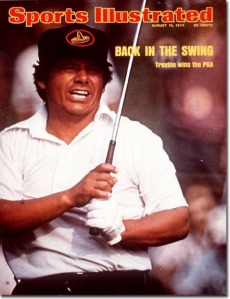When you think of golf you think of beautiful fairways and fast greens. Sometimes you think of the great shot you hit or maybe the one you wish you could hit again! But have you ever stopped to think how dangerous golf can be?
Probably not, but it can be a dangerous sport if you and your playing partners don’t follow a few simple tips:
1. Control your anger: We all have seen it happen a player gets upset about a bad shot or a missed putt and there goes the club like a helicopter blade going through the air. Throwing a club is a bad idea! Enough said!
2. Respect the golf cart: Too many times I have seen golfers ride with their leg hanging outside, drive down a hill sideways or drive the cart to close to the water and somehow the cart and sometimes the golfers end up in the water. Just another reason not to drink and drive!
3. The final tip to playing safe golf, Pay Attention: This may sound simple but believe me it’s not! How many times have you or your buddy taken a practice swing and almost be-headed each other? Or maybe you were putting your tee in the ground and the golfer who just hit decides to work on his or her game and whiffs your head by an inch or two!
This all brings me to the near death experience one of my friends had on the golf course a few weeks ago. My two friends Paolo and Fausto were playing golf together like they do on everyday that ends in “Y”. Paolo’s ball was plugged in the fairway in front of Fausto’s ball and Fausto recommend that Paolo remove his ball from the plug.
Since they were 210 yards away from the green and there were people still on the green Paolo agreed and went to his ball bent down lifted his ball out of the plug and as he started to stand up the people had vacated the green. Fausto somehow lost track of the fact that Paolo was still in front of him and decided to hit his 5 wood. The ball flew directly over Paolo’s head missing him by inches.
Paolo responded like most of us would he yelled “Fausto what the “bleep” are you doing!!!” Fausto replies “Oh my god I’m so sorry I almost kill my best friend.” Clearly shaken Paolo forgives him and they continue to play and finish the round! I’m sure both Paolo and Fausto still have nightmares about that shot.
It is a funny story when they tell it now but it could have been a tragedy! So the next time you tee it up try to follow these simple tips and keep one eye out for Fausto!!
“Hit em straight”
Bobby Vermillion
Endless Golf



